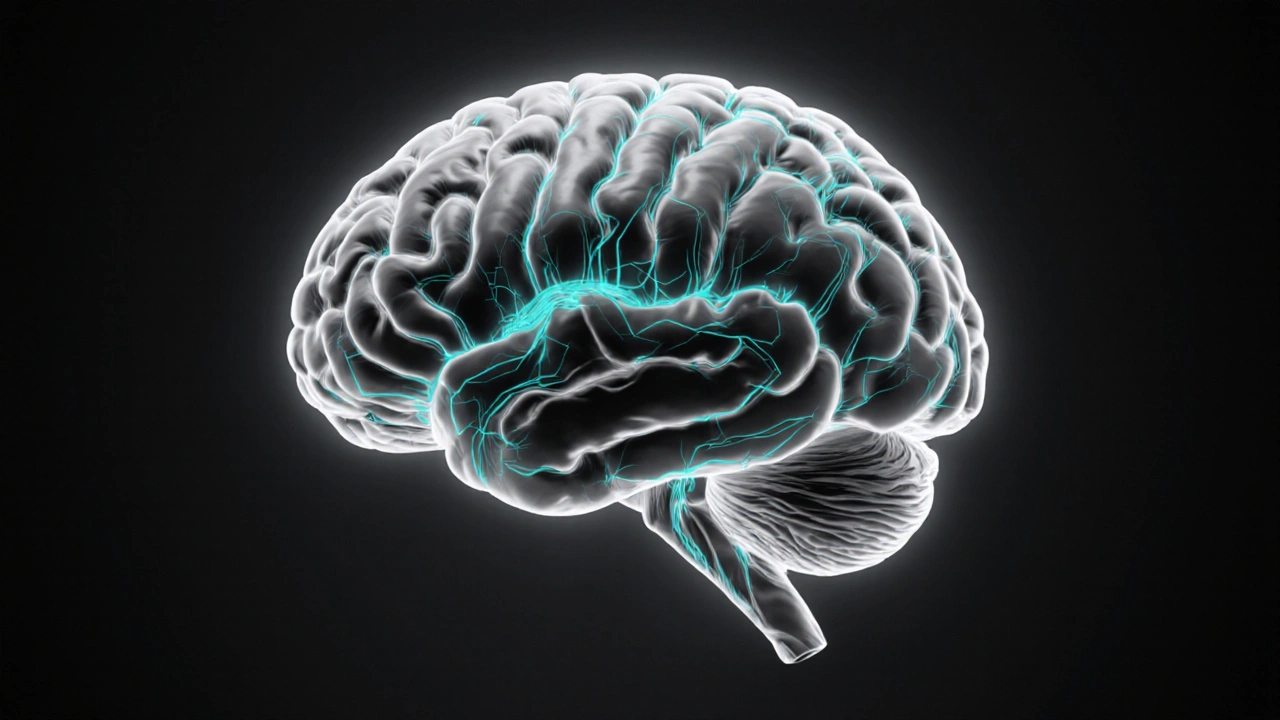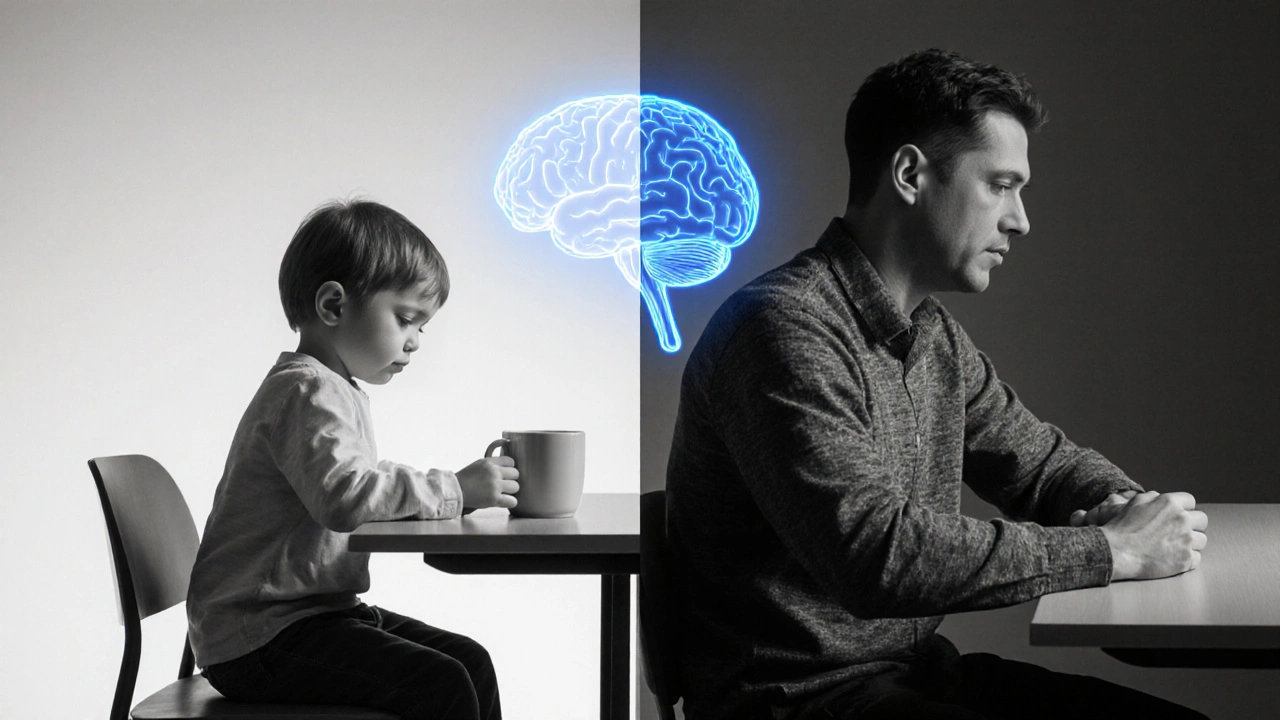ADHD Medication Comparison Tool
Medication Comparison Tool
Understand which ADHD medication type might align best with your priorities. This tool compares key aspects of stimulant and non-stimulant medications based on your specific needs.
Select Your Priorities
Medication Recommendation
Key Differences
| Aspect | Stimulants | Non-Stimulants |
|---|---|---|
| Onset Time | 30-60 minutes | 1-2 weeks |
| Effectiveness Rate | 70-80% of patients | 30-50% of patients |
| Common Side Effects | Appetite loss, insomnia, increased heart rate | Dry mouth, fatigue, constipation |
| Abuse Potential | Higher (controlled substances) | Low |
| Typical Use Cases | First-line treatment, fast symptom relief | When stimulants are contraindicated or cause severe side effects |
Ever wonder why some people seem to constantly fidget, lose focus, or act on impulse? Those behaviors can be part of Attention‑Deficit/Hyperactivity Disorder, commonly known as ADHD is a neurodevelopmental disorder that typically appears in childhood and can continue into adulthood. Understanding what drives the condition, how it shows up, and what helps can make life easier for anyone dealing with it.
Key Takeaways
- ADHD affects brain circuits that manage attention, impulse control, and activity levels.
- Symptoms differ across ages but fall into three main groups: inattention, hyperactivity, and impulsivity.
- Both genetics and environment play roles; no single cause explains every case.
- Effective treatment blends medication, therapy, lifestyle tweaks, and school or work accommodations.
- Early diagnosis and a personalized plan improve outcomes for children and adults alike.
What Exactly Is ADHD?
ADHD stands for Attention‑Deficit/Hyperactivity Disorder. It belongs to the broader class of neurodevelopmental disorders, which are conditions that develop as the brain matures. The hallmark of ADHD is a mismatch between the brain’s demand for regulation and the available control mechanisms, especially in the prefrontal cortex.
Research shows that people with ADHD often have lower levels of dopamine - a neurotransmitter that helps the brain prioritize tasks and feel rewarded. When dopamine signaling is off‑balance, staying on task or resisting a distraction becomes a real struggle.
Recognising the Symptoms
Symptoms fall into three clusters. Not everyone shows all of them, and the intensity can change with age.
- Inattention: missing details, jumping between tasks, forgetting appointments, and seeming “spacey.”
- Hyperactivity: nonstop fidgeting, running or climbing in inappropriate situations, feeling restless.
- Impulsivity: interrupting conversations, making hasty decisions, difficulty waiting for a turn.
For children, teachers often notice these behaviors first. In adults, they may surface as chronic missed deadlines, impulsive spending, or strained relationships.
According to a 2023 epidemiological study, roughly 5% of children and 2.5% of adults worldwide meet diagnostic criteria for ADHD.

What Triggers ADHD? The Causes Behind the Condition
There’s no single “smoking gun,” but several factors consistently show up.
Genetic Influence
Family studies reveal that if a parent has ADHD, a child’s risk jumps to about 40‑50%. Specific genetic factors - such as variations in the DRD4 and DAT1 genes that regulate dopamine transport - increase susceptibility.
Brain Structure and Function
Neuroimaging often finds reduced volume in the prefrontal cortex and altered activity in the basal ganglia. These areas are key for executive function, the set of mental skills that include planning, impulse control, and flexible thinking.
Environmental Contributors
Prenatal exposure to nicotine, alcohol, or high levels of stress can disrupt brain development. Early childhood adversity, lead exposure, and premature birth also raise the odds.
Other Co‑occurring Conditions
People with ADHD often grapple with anxiety, depression, learning disabilities, or sleep disorders. These overlap can mask or worsen core symptoms, making assessment trickier.
How Is ADHD Diagnosed?
Diagnosis relies on a thorough clinical interview, behavior rating scales, and observation. The gold standard reference is the DSM‑5 (Diagnostic and Statistical Manual of Mental Disorders, Fifth Edition). To meet criteria, a person must show at least six symptoms from the inattention or hyperactivity‑impulsivity lists for six months, and the symptoms must impair functioning in two or more settings (e.g., home, school, work).
Clinicians often involve parents, teachers, or partners to gather a complete picture. In some cases, neuropsychological testing or brain imaging helps rule out other conditions, but these are not required for a formal diagnosis.
Treatment Options: From Medication to Lifestyle Tweaks
There’s no one‑size‑fits‑all plan, but most effective approaches blend several strategies.
Medication
Stimulants are the most commonly prescribed drugs and work by increasing dopamine and norepinephrine levels. The two major families are:
- Methylphenidate (e.g., Ritalin, Concerta)
- Amphetamine salts (e.g., Adderall, Vyvanse)
Non‑stimulant options like atomoxetine or the alpha‑2 agonist guanfacine are useful when stimulants cause side effects or aren’t effective.
Therapy and Skills Training
Cognitive‑behavioral therapy (CBT) helps individuals develop coping tools, break tasks into manageable steps, and challenge negative thought patterns. Parent‑training programs teach caregivers how to structure the environment, use consistent reinforcement, and reduce conflict.
School and Workplace Accommodations
Simple changes - like extra time on tests, preferential seating, or using noise‑cancelling headphones - can level the playing field. Adults benefit from flexible scheduling, clear written instructions, and task‑management apps.
Lifestyle Adjustments
Regular exercise boosts dopamine, improves mood, and reduces restlessness. A balanced diet rich in omega‑3 fatty acids, good sleep hygiene, and mindfulness practices also support brain function.

Stimulant vs. Non‑Stimulant Medications: A Quick Comparison
| Aspect | Stimulants | Non‑Stimulants |
|---|---|---|
| Typical Onset | 30‑60 minutes | 1‑2 weeks |
| Effectiveness Rate | 70‑80% of patients | 30‑50% of patients |
| Common Side Effects | Appetite loss, insomnia, increased heart rate | Dry mouth, fatigue, constipation |
| Abuse Potential | Higher (controlled substances) | Low |
| Typical Use Cases | First‑line treatment, fast symptom relief | When stimulants are contraindicated or cause severe side effects |
Putting It All Together: Managing ADHD Day‑to‑Day
Creating a personalized plan involves three steps:
- Assess and Prioritise - Work with a clinician to identify the most impairing symptoms and set realistic goals (e.g., improve homework completion or reduce impulsive spending).
- Choose Tools - Decide whether medication, therapy, or both are right for you. Pair them with practical aids like planners, timers, or reminder apps.
- Monitor and Adjust - Track progress weekly. If a side effect emerges or a strategy stalls, discuss tweaks with your healthcare provider.
Many people find that small environmental changes - such as decluttering the workspace, using a standing desk, or setting a daily “focus block” with a timer - dramatically improve concentration.
Remember, ADHD is not a character flaw; it’s a brain‑based difference that can be managed with the right support.
Frequently Asked Questions
Can adults be diagnosed with ADHD, or is it only a childhood condition?
Yes, ADHD often continues into adulthood. While many people are diagnosed as children, about 60% retain symptoms that affect work, relationships, and daily life. Adults can seek assessment from a psychiatrist, psychologist, or qualified primary‑care doctor.
Is medication mandatory for treating ADHD?
No. Medication is highly effective for many, but it’s not required. Behavioral therapy, coaching, lifestyle changes, and academic or workplace accommodations can also lead to significant improvement, especially when combined.
What are the most common side effects of stimulant medication?
Typical side effects include reduced appetite, difficulty sleeping, mild jitteriness, and occasional increase in heart rate. Most issues fade after dose adjustments or switching to a long‑acting formulation.
Can diet influence ADHD symptoms?
Evidence suggests that omega‑3 fatty acids, found in fish, nuts, and seeds, may modestly improve attention. Eliminating excessive sugar or artificial color additives can help some children, though results vary. A balanced diet supports overall brain health.
How can I support a child with ADHD at school?
Work with teachers to set up individualized accommodations: extra test time, preferential seating, clear written instructions, and scheduled breaks. Consistent routines at home and positive reinforcement also reinforce school‑based strategies.
Understanding ADHD is the first step toward a smoother, more empowered life. Whether you’re a parent, a teen, or an adult navigating the workplace, the mix of knowledge, medical help, and practical tweaks can turn challenges into manageable routines.

9 Responses
Yeah, because popping pills is the only patriot's solution.
The comprehensive overview presented offers a balanced synthesis of current neurobiological findings and therapeutic modalities. While the exposition on pharmacologic onset times is accurate, a more nuanced discussion of off‑label applications could enhance clinical relevance. Additionally, the inclusion of epidemiological prevalence statistics substantiates the public health imperative. Overall, the piece maintains scholarly rigor without sacrificing readability.
Hey, great rundown! I love how you broke down the meds into quick‑hit vs. steady‑state – super helpful for folks juggling schedules. If you’re hunting for extra tools, consider pairing a short‑acting stimulant with a simple habit‑tracker app; it can turn chaotic brain fog into a manageable checklist. Also, remember to sprinkle in regular cardio – even a 20‑minute jog pumps dopamine and eases restless energy. Keep the info flowing, and kudos for making the science feel approachable.
One could argue that the neurochemical dysregulation described is but a symptom of a broader existential misalignment. When the prefrontal cortex falters, the individual’s capacity to navigate purpose becomes compromised, leading to impulsive pursuits. Addressing this with medication merely patches the circuitry without challenging the underlying narrative of self. Therefore, integrating mindfulness practices alongside pharmacotherapy may restore a holistic equilibrium.
Your perspective enriches the discourse by highlighting the philosophical dimensions of attentional disorders. While neurobiological interventions remain central, acknowledging the existential experience fosters a more compassionate therapeutic framework. Cross‑cultural research suggests that integrating narrative therapy can complement pharmacological strategies, particularly in collectivist societies. Thank you for prompting this valuable contemplation.
Wow, this guide is super useful! I’ve seen my niece struggle with focus, and the simple tip about using a “focus block” with a timer actually helped her finish homework. Also, the reminder about omega‑3s was a nice touch – she loves fish sticks, so it’s an easy win. Thanks for sharing all these practical hacks.
Indeed, the confluence of neuropharmacology and behavioral scaffolding is nothing short of avant‑garde 🚀. One must appreciate the epistemic elegance of blending a timer with omega‑3 supplementation – it exemplifies a synergistic paradigm shift. 🧠✨
Finally, a post that actually gets the science right 🙄. No fluff, just facts about onset times and side‑effects. 👊
The ADHD discourse has been perennially saturated with reductive caricatures that obscure the underlying neurocognitive architecture.
What most lay readers fail to appreciate is that the dopaminergic dysregulation is not merely a deficit but a dysphasic modulation of reward prediction error signaling.
Consequently, stimulant pharmacotherapy acts as a pharmacokinetic enhancer that normalizes phasic firing patterns in the mesocortical tract.
However, the oversimplified binary of stimulant versus non‑stimulant ignores a spectrum of off‑label agents such as modafinil, which boasts a distinct norepinephrine reuptake inhibition profile.
Moreover, the side‑effect matrix is more nuanced than the footnote‑level appraisal provided in most popular articles.
Appetite suppression, for instance, is mediated via hypothalamic ghrelin antagonism, a pathway that can be mitigated by timed macronutrient distribution.
Insomnia, on the other hand, is often a downstream effect of heightened noradrenergic tone colliding with circadian rhythm misalignment.
Therefore, a chronotherapeutic schedule that aligns dosing with individual chronotype can dramatically reduce sleep disturbances.
From a behavioral standpoint, the incorporation of cognitive‑behavioral interventions functions as a top‑down executive control enhancer, complementing the bottom‑up pharmacologic effects.
Research indicates that combined modality treatment yields a synergistic effect size of approximately 1.2, surpassing monotherapy benchmarks.
Nonetheless, there remains a paucity of longitudinal data addressing the impact of early‑life stimulant exposure on neurodevelopmental trajectories.
Ethical considerations also arise when considering the abuse potential, particularly in adolescent cohorts with high impulsivity indices.
Policy frameworks must therefore balance accessibility with stringent monitoring protocols, perhaps leveraging digital adherence trackers.
In practice, clinicians should adopt a tiered assessment algorithm that stratifies patients by symptom severity, comorbidities, and functional impairment.
Only after exhaustive trial of first‑line stimulants should clinicians pivot to non‑stimulant or adjunctive agents.
In sum, the management of ADHD demands an integrative, evidence‑based approach that transcends simplistic dichotomies and embraces both neuropharmacological precision and psychosocial enrichment.